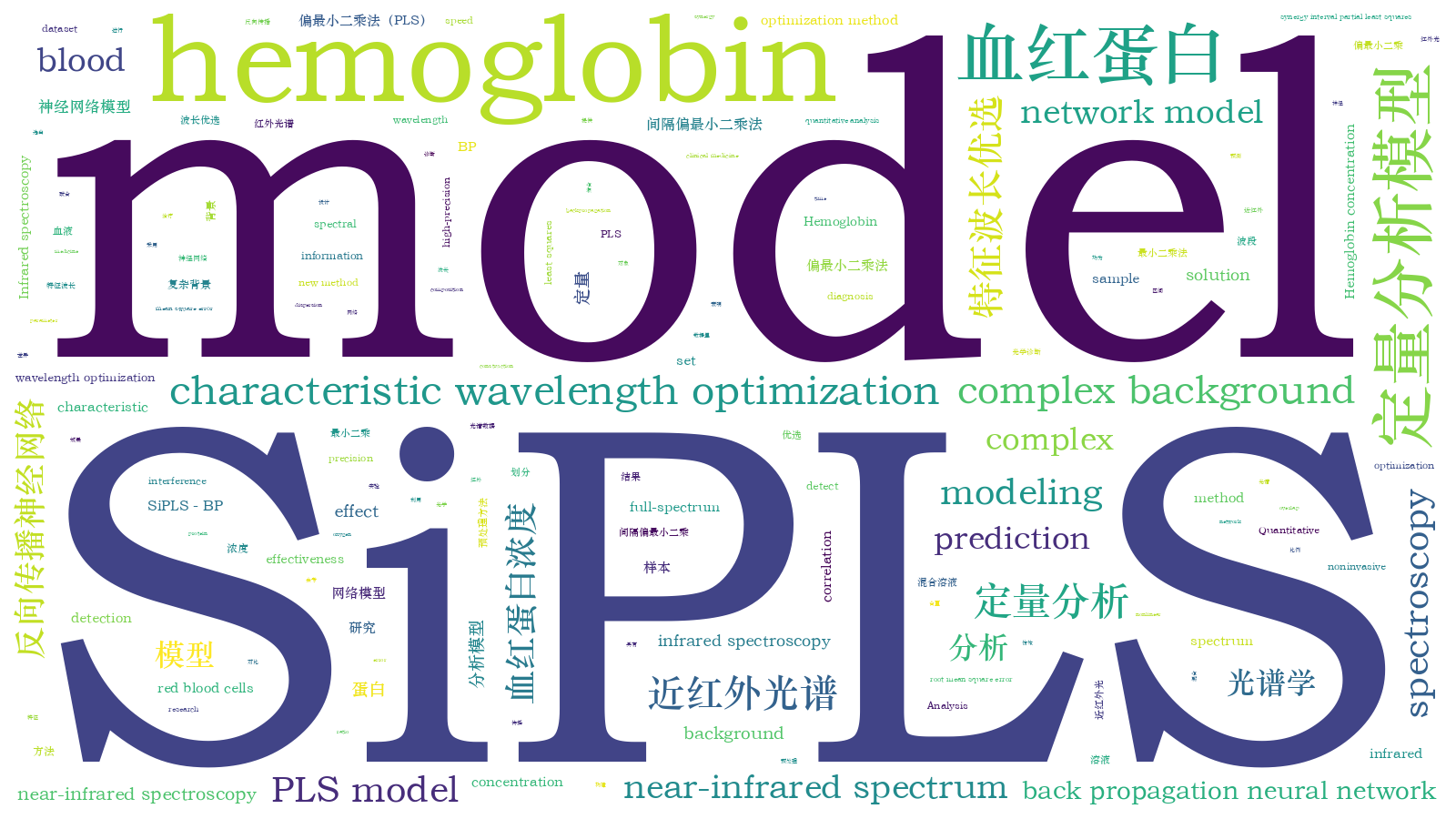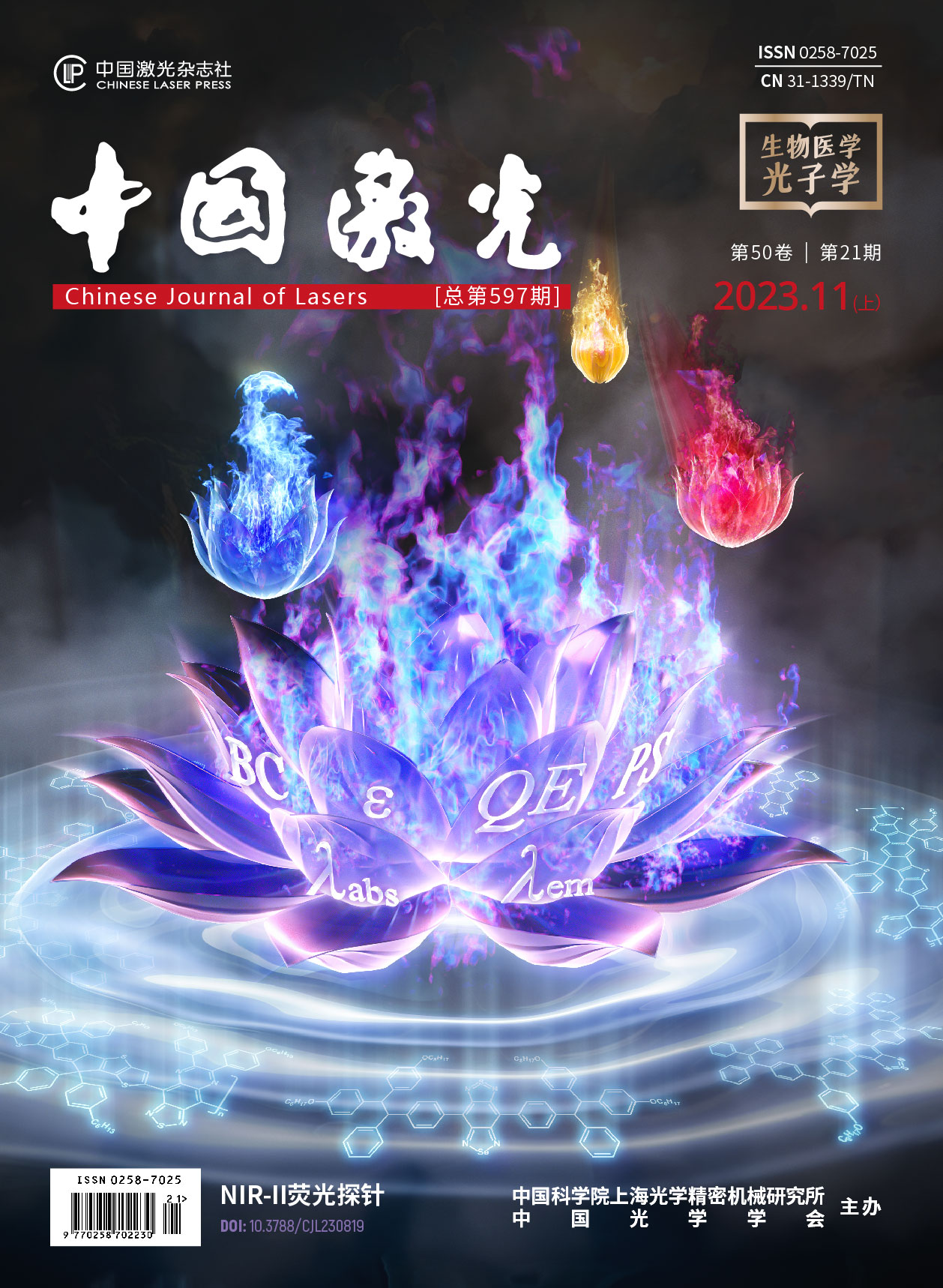基于SiPLS‑BP模型的血红蛋白定量分析研究
Hemoglobin is a special protein responsible for transporting oxygen in red blood cells. Hemoglobin concentration is an important parameter in routine blood tests and an important index for the diagnosis of anemia and other blood diseases in clinical medicine. Changes in hemoglobin concentration can directly reflect changes in human health; therefore, it is important to detect the hemoglobin concentration in the human body accurately for the diagnosis of many blood diseases. Current clinical medical treatments mainly rely on chemical reagents to detect hemoglobin concentrations, resulting in high detection costs, long analysis time, complicated operations, and trauma to the human body. Infrared spectroscopy can detect hemoglobin concentrations without reagents efficiently and noninvasively. However, the blood composition is complex, and the spectral overlap is serious. This complex background information makes it difficult to construct a high-precision quantitative hemoglobin analysis model. The model developed in this study is based on a backpropagation (BP) neural-network model combined with synergy interval partial least squares (SiPLS). This model uses SiPLS to eliminate most of the interference information, accelerates the modeling speed, and can achieve high-precision quantification of hemoglobin concentration in a complex background. It is believed that the proposed model can be helpful in promoting noninvasive detection of hemoglobin.
In this study, the near-infrared spectral data of 186 blood samples with different concentrations of hemoglobin and 39 near-infrared spectral data of hemoglobin imitation solution samples with different concentrations under a complex background are used as the research objects. The best dataset division method, best division ratio, and best pretreatment method are selected. Four quantitative analysis models [SiPLS, SiPLS-BP, full-spectrum partial least squares (PLS), and full-spectrum BP] are constructed using SiPLS preferred bands, analyzed, and compared.
The best quantitative model for both samples is SiPLS-BP. The correlation coefficient of the prediction set based on the SiPLS-BP model for blood samples reaches 0.9907, and the root mean square error of the prediction set (RMSEP) is 1.807 (Table 2). The correlation coefficient of the prediction set based on the SiPLS-BP model for the imitation solution sample reaches 0.9975, and the RMSEP is 1.017 (Table 3). The characteristic bands selected by the SiPLS model for the blood samples are 1100?1298 nm, 1600?1798 nm, and 2100?2198 nm (Table 4), and the characteristic bands selected by the SiPLS-BP model are 1100?1310 nm, 1630?1840 nm, and 2054?2370 nm (Table 4). The SiPLS and SiPLS-BP models of the imitation solution samples adopt bands at 1141?1220 nm and 1301?1380 nm. Even when the same characteristic wavelength optimization method is used, the preferred bands of each model are not exactly the same. For the imitation solution and blood with a complex background and large sample difference, the SiPLS-BP model has a better prediction effect (Figs.5 and 6). The predicted value of the model is the closest to the actual value, the degree of dispersion is the smallest, and the quantitative effect is the best.
To quantify hemoglobin concentration accurately in complex backgrounds using infrared spectroscopy, a model using SiPLS-BP is proposed. To verify the effectiveness of the SiPLS-BP model, four models (full-spectrum PLS, SiPLS, full-spectrum BP, and SiPLS-BP) are constructed to predict 39 complex-background hemoglobin imitation solution samples and 186 blood samples. The results show that the SiPLS-BP model has the best quantitative effect on hemoglobin in a complex background. The correlation coefficient of the prediction set under the SiPLS-BP model for the imitation solution sample reaches 0.9975, and the prediction effect of the model is 44.2% higher than that of the SiPLS model. The correlation coefficient of the prediction set under the SiPLS-BP model for blood samples is 0.9907, and the prediction effect of the model is 7.2% higher than that of the SiPLS model. The results show that the nonlinear BP model has a better prediction effect for the solution with a complex background and large sample difference. The SiPLS combined with the BP or PLS model improves the predictive effect of the model significantly for the two samples. This shows that an appropriate characteristic wavelength optimization method can eliminate interference information and simplify the model, greatly improving the prediction effect of the model and increasing the modeling speed. This research provides a new method for the construction of a hemoglobin quantitative analysis model in a complex background by near-infrared spectroscopy and provides a new approach for noninvasive detection of hemoglobin.
张朱珊莹, 朱思聪, 张献文, 付保荣, 李智, 曹汇敏, 刘繄. 基于SiPLS‑BP模型的血红蛋白定量分析研究[J]. 中国激光, 2023, 50(21): 2107203. Zhushanying Zhang, Sicong Zhu, Xianwen Zhang, Baorong Fu, Zhi Li, Huimin Cao, Yi Liu. Quantitative Analysis of Hemoglobin Based on SiPLS‑BP Model[J]. Chinese Journal of Lasers, 2023, 50(21): 2107203.







